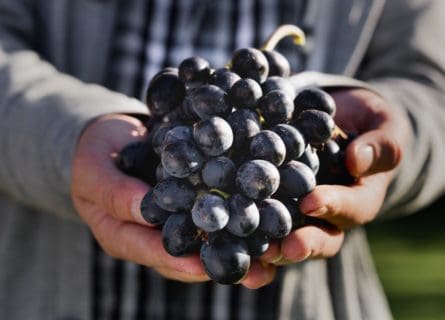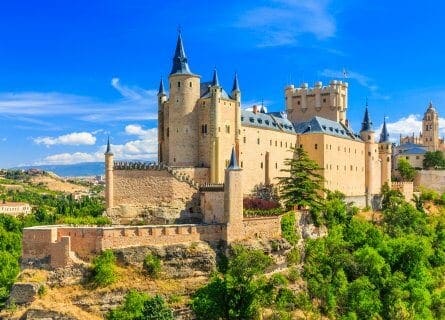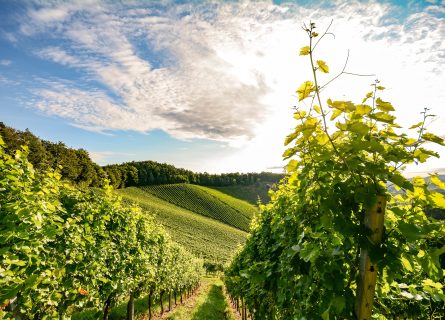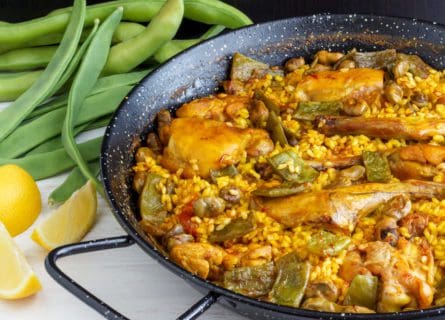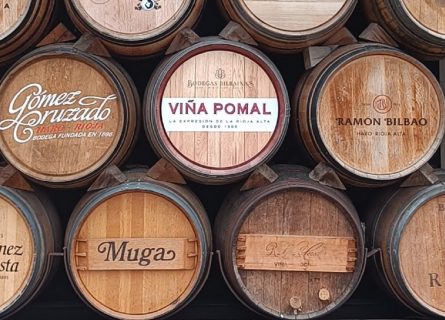Somontano Wine Region Guide
Discover the Treasures of Somontano: Your Ultimate Wine Journey Awaits!
EXPLORE ALL OUR GUIDES: SPANISH WINE REGIONS
Last updated: September 12, 2024
Introduction
Situated on a high plateau in the mountainous area of Huesca (known for its ski resorts), Somontano is now a force to be reckoned with. Yes indeed: although the region lost its footing somewhat in the 20th century, a surge of investment (and new ideas) has transformed the reputation of this nascent (created in 1985) DO. The area under vine is one of Spain’s most spectacular, with green fields, hills, wildflowers, medieval hamlets, and lonely hilltop monasteries. Most importantly, the region’s thriving wine industry provides jobs and security to a traditionally poor part of Aragon.
Major companies like Gonzalez Byass deserve much praise for investing millions in ultra-modern wineries, star winemakers, and wine tourism infrastructure. Whereas in other parts of Spain, it can be impossible to visit wineries. Enate, Bodegas Pirineos, and Viñas del Vero have set out to be the main attractions on Spanish wine tours.
The region offers the gourmet tourist a complete package: cozy restaurants tucked away in romantic, historic villages offering excellent local cuisine (high on game, artisan cheeses, rich vegetable dishes, and homemade sausage chorizos); stunning modern wineries that open their doors to happy, wine-loving visitors; and beautiful landscapes and scenery. Bienvenidos!
Discover more about Spanish Wine
History
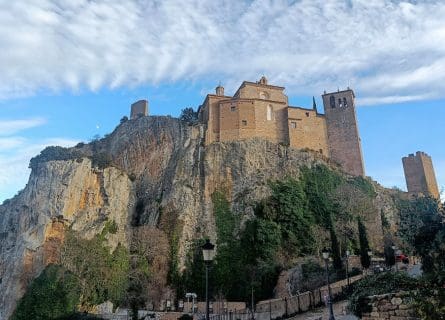
Aragon boasts a proud history, although it lags behind its neighbors Rioja and Catalonia in viticultural development. Nevertheless, the Romans had ambitious plans to tame the wild landscape of this mountainous region, founding a settlement called Caesaraugusta (modern-day Zaragoza) in 14 BC. From its humble beginnings, Caesaraugusta soon grew into an important center of trade and commerce, thriving for almost three centuries at the height of Roman power.
The Visigoths and the Moors
However, the 5th century witnessed a dramatic power shift in Europe as the Western Empire collapsed under the weight of its decadence and conceit. In 472, the Visigoths from northern Europe conquered Aragon, although they only enjoyed a relatively brief spell of dominance in the Iberian Peninsula. After the Moorish invasion of 711, Aragon fell to Tariq’s armies as a far superior force that easily defeated the Visigoths; Zaragoza became the capital of a province known as the ‘Upper March,’ one of the key strongholds of Al Andalus.
Yet a campaign led by the Catholic monarchs started to yield results in the 10th century. By 1118, the region was back in Christian control, recaptured by Alfonso I. From the 12th to the 15th centuries, Aragon was a powerful kingdom, or more accurately, an alliance of states that included Catalunya.
In its heyday, Aragon controlled territories across the Mediterranean, while the marriage of Isabel of Castile and Fernando II of Aragon paved the way for Spain’s unification. The following centuries presented a mixed bag: Spain created vast wealth by exploring the New World; however, it lost much of this wealth due to a series of ruinous wars with rival European powers.
In the 20th century, dictator Francisco Franco ruled Spain for many decades after the nationalists won the civil war in 1939. His reign endured until the 1970s, although the country enjoyed a relatively painless transition to democracy. Several years later, the local government of the Huesca province asked Viñas del Vero to plant Tempranillo and international varieties in Somontano—its modern identity was born.
Geography and terroir
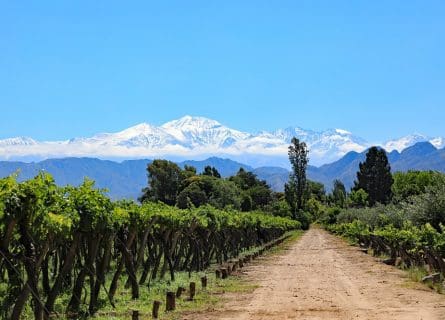
The name Somontano means ‘at the foot of the mountain’. It’s an apt title for this beautiful region: on a clear day, you can see the snow-covered Pyrenees in the distance. Indeed, the highest peaks lie in the Huesca province of northeastern Spain, crossed by the Aragonese variation of the pilgrims’ route to Santiago de Compostela. The region’s climate varies as much as the landscape: winters can be long and summers dry. In addition, growers have to contend with sudden temperature changes when the seasons change.
But there is much that is advantageous about the topography of Somontano. The Sierra de Guara and Sierra de Salinas protect vines from cold northern influence, providing a gentle south-facing amphitheater of prime vineyard real estate – soils range from sandy to gravel and limestone. The winegrowing area is centered on the villages of Barbastro, Salas Bajas, and Salas Altas, east of Huesca. Vines are also planted along the banks of the Vero and Cinca canals.
The Importance of Elevation
But the most important quality factor, as elsewhere, is elevation: vineyard land rises to 650 meters above sea level in some places, affording all the benefits of diurnal temperature variation. These high-altitude climats (vineyard sites) are understandably some of the most coveted terroirs in Somontano; the total area under vine has more than doubled since the late 1990s, rising to over 4000 hectares. As it stands today, there are no plans to undertake a formal classification of terroir in the region, unlike Bierzo, Priorat, and neighboring Rioja.
Winemaking and regional classifications
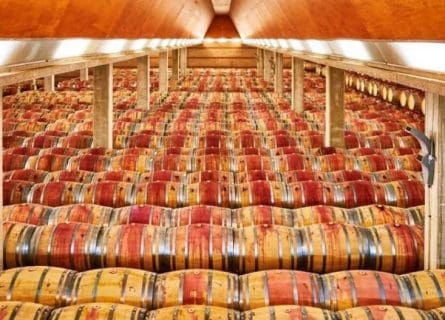
Historically, the wines of Aragon had little chance of finding an audience abroad. Based on a hotchpotch of Indigenous grapes (local varieties include Moristel, Parraleta for red wine, and Macabeo and Alcañon for whites), poor winemaking produced coarse and rustic caricatures.
To be blunt, they were dire. Finally, however, Viñas del Vero and its contemporaries instigated a revolution in Somontano winemaking in the early 00s, replacing inadequate clones with high-quality international varietals. These include Cabernet Sauvignon, Merlot, Chardonnay, Gewurztraminer, and Spanish noble grapes like Tempranillo.
Defining Characteristics
So, it is tough to pigeonhole the wines of Somontano. However, the overarching theme is ripe fruit and stupendous value; Viñas del Vero, Enate, and the cooperative Pirineos release very few wines that are poorly made or expensive. Crisp acidity is another welcome characteristic that defines many Somontano wines, not least because soils have a low pH – elevation also helps keep alcohol levels in check.
At the same time, freshness is a top priority for all winemakers. As a result, some of the most impressive reds are mouth-filling Bordeaux blends: savory concoctions that can compete with the leading labels of the Medoc.
The Tempranillo, meanwhile, is ripe and succulent, while top-notch Chardonnays from Somontano come dangerously close to knocking Chivite’s fine examples of their perch! The region has also enjoyed success with grape varieties that stubbornly refuse to yield decent wine in other parts of Spain; Gewurztraminer is up there with the finest expressions made in Alsace.
However, sommeliers will tell you that Garnacha (Grenache) is a variety worth getting excited about. They may have a point: old vine Grenache is one of Aragon’s USPs, a style that combines top Priorat’s potency with Chateauneuf-du-Pape’s finesse. Viñas del Vero’s Secastilla is one of the best examples, based on fruit harvest from low-yielding ancient bush vines. A mouthful of complex, earthy, and spicy red fruit awaits.
Facts & Figures
Key wine styles
- Full-bodied white, red, and rosé wines
Appellation structure
- Somontano DO
Hectares under vine
- Approximately 4000
Average annual production
- 184,000 hectoliters
Approximate number of winegrowers
- 500
The lowdown
Somontano is a conundrum. At first glance, the region is an unmitigated success story: dynamic producers, high-quality wines, a developed tourism infrastructure, and scenery to die for. Some of Spain’s leading white wines are made in the Pyrenees, a cool climate due to its elevation. Conversely, this corner of Aragon has yet to establish a firm identity abroad, lacking the cachet of Rioja and Ribera del Duero. Ironically, part of the problem is the emphasis on international varieties, despite local pride in the quality of Aragonese Cabernet Sauvignon and Chardonnay.
Don’t get us wrong: the best examples are genuinely world-class wines – able to compete with the best of Burgundy and Bordeaux. However, there is an argument that French grapes have saturated the market with premium wines. The modern paradigm increasingly centers upon providing a point of difference as opposed to simply emulating the triumphs of others.
Garnacha and Indigenous Varieties
To that end, wineries like Viñas del Vero focus on core strengths. Rather than trying to be all things to all men, Somontano’s flag-bearer regards Garnacha as its secret weapon on the export markets, which is a wise move. Indeed, amid Aragon’s diverse bag of varieties and wines, there is something quite beguiling in the density and perfume of old vine Grenache.
Its top wines are cheerleaders for this underrated grape, representing irresistible value when benchmarked against the top cuvées of the southern Rhone. In addition, traditionalists like Bodega Pirineos work very hard at maintaining the region’s (almost) forgotten indigenous varieties, squeezing finesse out of the problematic Moristel.
Meanwhile, the low-yielding but structured and mineral-scented Parraleta deserves a second look. If Somontano returns to its roots, it stands a better chance of being taken seriously abroad. The world does not need any more cedary Cabernet Sauvignon, no matter how delicious it is.
Key Grape Varietals
-
Chardonnay
Chardonnay is a green-skinned grape varietal native to the Burgundy wine region in France and one of the most popular varieties worldwide.
Find out more -
Grenache Blanc
Grenache blanc is a white wine grape varietal popular in the Rhône, Châteauneuf-du-Pape and Languedoc-Roussillon regions of Southern France.
Find out more -
Gewurztraminer
Explore Gewurztraminer, a highly aromatic white grape from Alsace, France. Savor its unique character and allure in every sip
Find out more -
Macabeo (Viura)
Discover Viura: Rioja's Prominent White Grape & Catalonia's Macabeo. Explore its versatility in exquisite wines. A must-read for wine enthusiasts.
Find out more -
Sauvignon Blanc
The sauvignon blanc grape varietal, originally from the Bordeaux region of France, is now one of the world's most loved white varieties.
Find out more -
Cabernet Sauvignon
Discover the irresistible allure of Cabernet Sauvignon—a worldwide favorite with robust, dark-bodied flavor. Unleash your wine journey today!
Find out more -
Grenache
Garnacha: Spain's Red Gem. Akin to Pinot Noir, it bridges terroir and winemaking, crafting captivating expressions.
Find out more -
Merlot
Merlot is the most cultivated grape in Bordeaux and closely related to Cabernet Franc
Find out more -
Parraleta
Parraleta grape is a rare and exceptional red wine variety originating from Somontano, Spain. Its small to medium-sized deep red grapes thrive in cool climates, producing full-bodied wines with fruity aromas of dark berries, cherries, and plums. Parraleta wines are characterized by their elegance, balance, and vibrant acidity. They offer a range of flavors that can be enjoyed in their youth or aged for more intricate notes of spices, leather, and earthiness.
-
Pinot Noir
Pinot noir is a light-bodied red wine varietal closely related to the Vitis vinifera grape and produces the most sought-after red wines in the world.
Find out more -
Shiraz (Syrah)
Syrah is dark-skinned and perhaps the most underrated of the 'noble' red grape varieties.
Find out more -
Tempranillo
Discover Tempranillo: Spain's iconic red grape. From Ribera del Duero to Toro, it yields concentrated wines. Explore its synonyms and unleash its prowess.
Find out more
Somontano gastronomy
Centuries of foreign influence, especially from the Moors, have enriched the interior of northeastern Spain, revolutionizing local gastronomy in the early Middle Ages. Thanks to them, chefs take rice, oranges, almonds, and saffron for granted. These ingredients and more are put to spectacular effect in the kitchens of Huesca and Zaragoza—the latter is one of Spain’s best destinations for traveling from bar to bar and sampling delicious tapas.
Expect a strong emphasis on meat, particularly as Aragon’s cold, dry mountain air is ideal for curing jamon! Cochifrito is a tasty mix of fried lamb strips, lemon, paprika, and lashings of garlic. Enjoy it with a glass of Somontano Grenache in the liveliest and noisiest tapas bar you can find.
Cellar Tours Recommended Wineries
-
Enate
Enate, located in Somontano, calls itself the "Winery of the 21st century", and its spectacularly designed modern winery attests to that. Read more -
Vinas Del Vero
Explore the Vinas Del Vero Winery Guide and discover the best of Somontano wines. Boutique designer wines in a modern, innovative winery. Plan you trip now! Read more
Further Reading: Discover More Related Blog Content
More information
If you would like us to customize an exclusive luxury tour, contact us and let us know your travel plans. We offer luxury food and wine tours for private groups of a mininium two guests. In addition, all of our private, chauffeured tours are available year-round upon request.



